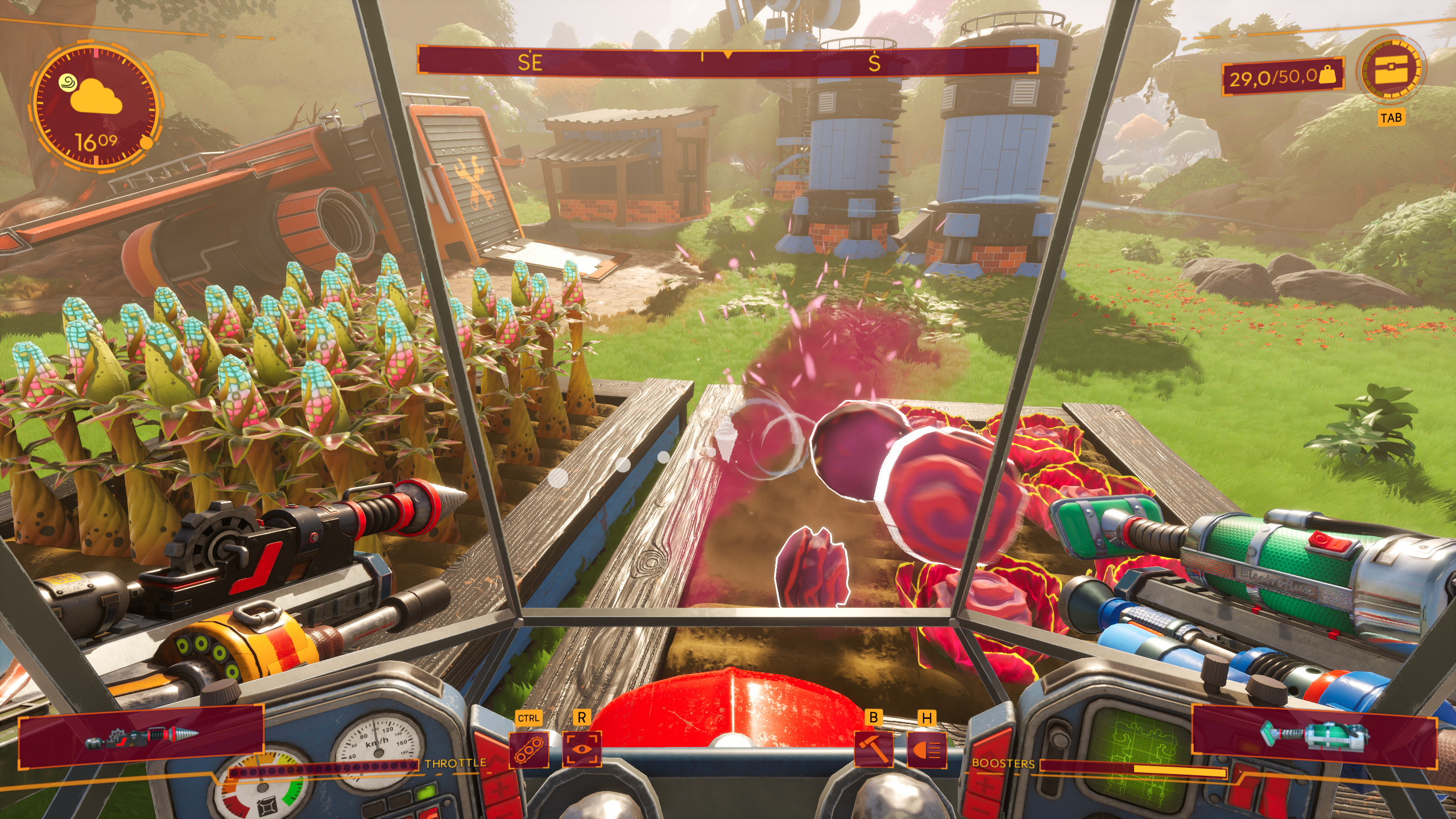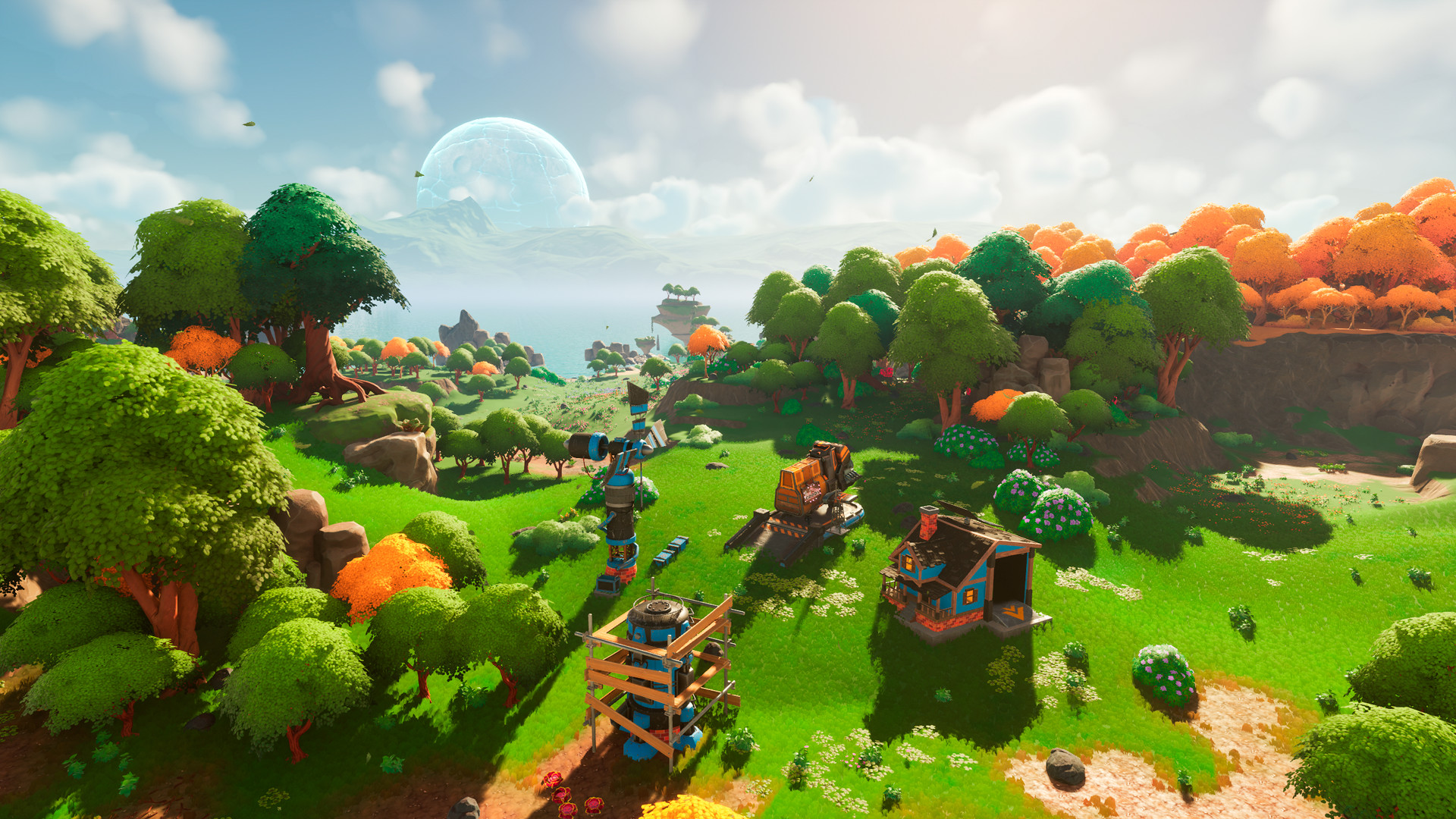Lightyear Frontier asks: what if farming, but with a Transformer instead of tractors?
Buzz cut

Mechs are usually portrayed as weapons of mass destruction. Even if you can become friends with them (looking at you, Titanfall 2), in the end they’re all about stomping around and firing your gun arms. Enter Lightyear Frontier, a game that drops you onto an undiscovered planet with the mech as your Swiss army knife. Here, machines don’t kill, they “shoot to create”. In this mix of exploration, base-building and farming, mechs can equip up to four different tools for any job – whether that’s shooting seeds into a farming bed, hydrating them with your hose, or collecting resources with a drilling attachment. They look as if a tractor turned into a Transformer, the red front especially reminiscent of old farming vehicle designs.
For Swedish developer Frame Break – whose debut project popped up in the Xbox and Bethesda showcase at the weekend – the mech became the perfect multi-tool early on: something that would fit the theme of exploring an alien world, be fun to use, and give the farming game genre a modern twist. “We really wanted something you could do anything with,” CEO Joakim Hedström explains. Since you’ll be spending so much time in one, the mech also comes with a host of customisation options, from the colour right down to the movement system, in order to help every player fulfil their “personal mech fantasy”.
Your mech may dash through meadows, for example, before seamlessly resuming its two-legged amble, and you can customise it with different dyes in your mech garage, a space to lovingly gaze at the finished product. The game offers both a third-person and first-person perspective – in the former you can move around and enjoy both your mech and the planet’s environments, while tasks such as harvesting materials automatically drop you into first-person view so it’s easier to see what you’re doing.

Hedström stresses that Lightyear Frontier is a thoroughly peaceful experience, “a tribute to nature”, as he calls it. You can see that in the studio’s inspirations, which include My Time at Portia, Astroneer and The Planet Crafter. Lightyear Frontier’s farming and economy systems, the latter represented by a merchant who lands on the planet at certain intervals, are driven by sustainability rather than mere profit. Trying to grow and sell off endless monocultures isn’t going to get you far, as the value of individual items rises and falls. But it’s not all about farming and selling either. To build a base, you have to make tools first, and in order to make tools, you need to source raw materials and turn them into components. Where there’s crafting, there’s also a research tree. Research allows you to unlock not only new building types, but also mech upgrades and items.
There is no game over. We call Lightyear Frontier a survival game without death
Ultimately, a lot of what you need is powered by the materials you find around the planet, so you need to get exploring. “During exploration, your mech may get damaged by falling off a cliff or an encounter with wild animals,” Hedström explains. “There is no game over, but because of this we call Lightyear Frontier a survival game without death.” Your crops may also get damaged by weather hazards. Losing a valuable harvest can be frustrating, but Frame Break aims to keep things fair, so most of your time with the game will be about enjoying the fruits of your labour.
Exo-plore

None of Lightyear Frontier would work without an intriguing environment. This is where the game really shines – what we’ve seen of the planet so far looks extremely lush and inviting, from sun-dappled meadows to dense jungles. Everything is painted in bold colours reminiscent of games like Astroneer and No Man’s Sky. As nice as just soaking up the atmosphere can be, on top of farming and crafting, Limit Break wants to make your exploration worthwhile with a “mystery-driven, but unintrusive narrative”. This means that the story will not take away from your farming experience, but instead can be followed at your own pace. You might find out what exactly the planet’s previous inhabitants were up to, or simply make sure that you and the rest of your community have everything they need to flourish. Archeology or pure agriculture, the choice is yours.
Since Lightyear Frontier’s themes focus heavily on establishing a colony in a respectful, community-minded manner, it makes sense that Frame Break would want to emphasise community via multiplayer mechanics too. To this end, you can play Lightyear Frontier alone or online with up to three friends. “We really want to encourage people to play together so they can help each other,” Hedström says, “and we want to build a big community where people can discuss their findings and share what they have built.”
Sign up for breaking news, reviews, opinion, top tech deals, and more.

Frame Break has big plans for its new seed. When it launches in spring 2023, Lightyear Frontier will give you four worlds to explore, 100 resources to find and 50 buildings to craft. Furthermore, the team is working on underwater exploration. A large task for a small team of 12 full-time developers, but it has precedent – Frame Break’s inspirations were made by indie teams of a similar size, after all. Lightyear Frontier is set to release on PC and Xbox, and Frame Break promises more info on the game later this summer at Gamescom.
Malindy Hetfeld is a full-time freelance writer and translator specializing in game narrative, Japanese games, and, of course, music. You can find her work on Eurogamer.net, Unwinnable.com, Official Playstation Magazine and Techradar
